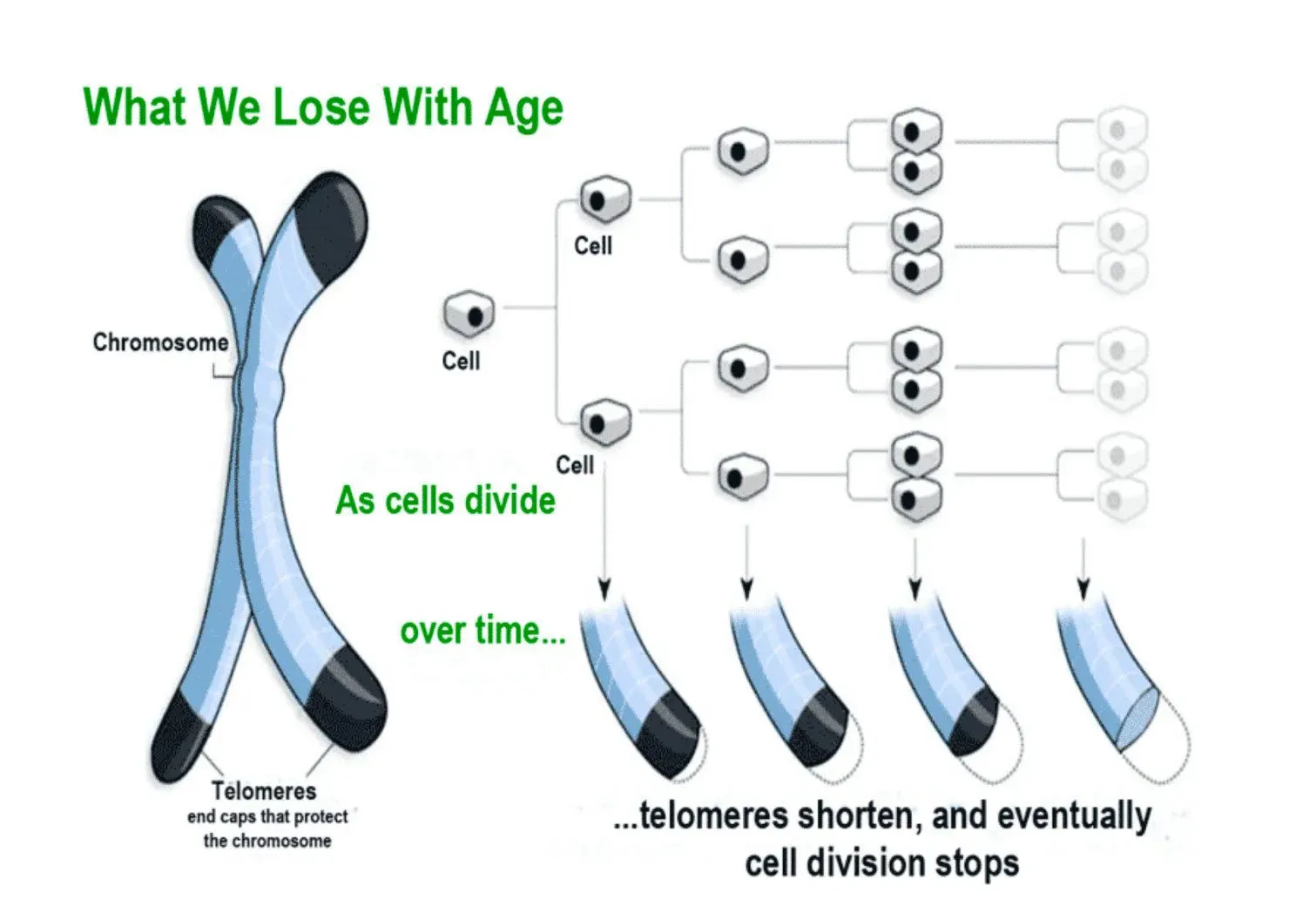About Hayflick limit:
- It refers to the maximum number of times a cell can divide.
- It’s named after scientist Leonard Hayflick, who discovered this phenomenon.
- The limit plays a crucial role in aging and the development of age-related diseases.
- Hayflick found that cells go through three phases.
- The first is rapid, healthy cell division.
- In the second phase, mitosis slows. In the third stage, senescence, cells stop dividing entirely.
- They remain alive for a time after they stop dividing, but sometime after cellular division ends, cells do a particularly disturbing thing: Essentially, they commit suicide.
- Once a cell reaches the end of its life span, it undergoes a programmed cellular death called apoptosis.
- Hayflick’s discovery got further weight after researchers in the 1970s discovered telomeres.
- Telomeres are repetitive DNA sequences at the very end of these strands, meant to protect the chromosome.
- Crucially, with each cell division, these telomeres get slightly shorter. Eventually, the telomere loss reaches a critical point at which cell division ends.
- That said, while shortening telomeres is related to aging, the exact relationship between telomere length and lifespan remains unclear.
Q1: What is Mitosis?
It is the process by which a cell replicates its chromosomes and then segregates them, producing two identical nuclei in preparation for cell division. Mitosis is generally followed by equal division of the cell’s content into two daughter cells that have identical genomes.
Source: Hayflick limit: Why immortality remains out of humans’ reach
Last updated on December, 2025
→ Check out the latest UPSC Syllabus 2026 here.
→ Join Vajiram & Ravi’s Interview Guidance Programme for expert help to crack your final UPSC stage.
→ UPSC Mains Result 2025 is now out.
→ UPSC Notification 2026 is scheduled to be released on January 14, 2026.
→ UPSC Calendar 2026 is released on 15th May, 2025.
→ The UPSC Vacancy 2025 were released 1129, out of which 979 were for UPSC CSE and remaining 150 are for UPSC IFoS.
→ UPSC Prelims 2026 will be conducted on 24th May, 2026 & UPSC Mains 2026 will be conducted on 21st August 2026.
→ The UPSC Selection Process is of 3 stages-Prelims, Mains and Interview.
→ UPSC Result 2024 is released with latest UPSC Marksheet 2024. Check Now!
→ UPSC Prelims Result 2025 is out now for the CSE held on 25 May 2025.
→ UPSC Toppers List 2024 is released now. Shakti Dubey is UPSC AIR 1 2024 Topper.
→ UPSC Prelims Question Paper 2025 and Unofficial Prelims Answer Key 2025 are available now.
→ UPSC Mains Question Paper 2025 is out for Essay, GS 1, 2, 3 & GS 4.
→ UPSC Mains Indian Language Question Paper 2025 is now out.
→ UPSC Mains Optional Question Paper 2025 is now out.
→ Also check Best IAS Coaching in Delhi

















